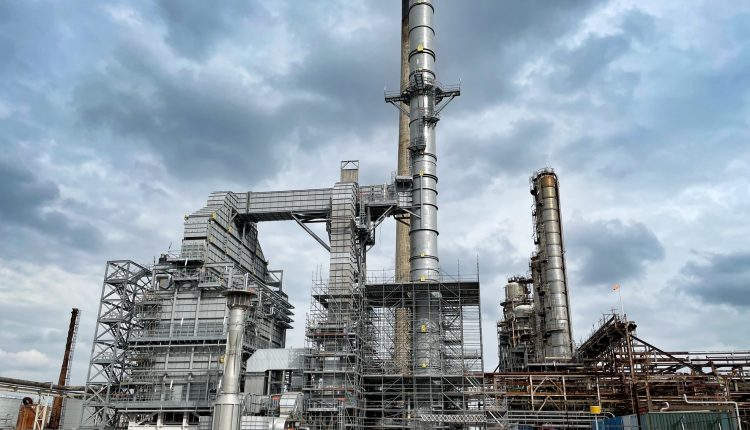
A ‘once-in-75-years’ winter storm and a ‘maintenance’ event blamed as Mersey oil giant Essar Oil UK (now trading as EET Fuels) sees annual losses hit £69m. Tony McDonough reports

Fuel refinery giant Essar Oil UK (now trading as EET Fuels) is reporting a big drop in annual revenues and hefty losses amid weather and maintenance disruptions.
EET Fuels operates the UK’s second-biggest oil refinery at Stanlow in Ellesmere Port, close to the River Mersey. It employs around 750 people on the site, which provides 16% of all UK road fuels, with double that number when contractors are included.
In its annual report for the 12 months to March 31, 2024, EET reported revenues of £7.6bn, down from £9.26bn last year, and pre-tax losses of £69m against a £7.9m profit in 2023. The company reports its results in US dollars and LBN has converted to sterling.
In October 2023 the UK and large swathes of Europe were hit by Storm Babet which left a trail of death and destruction. It was one of the most severe storms in decades, according to experts. Denmark saw its highest storm surge since 1904.
In its annual report EET said the storm has severely impacted its operations. It explained: “The operational and financial performance was lower than the previous year due to a reduction in throughput caused by a planned turnaround maintenance event, Storm Babet (one in 75 years event) and reduced refining margins.”
During the year EET saw the throughput of crude oil through Stanlow hit 60.25m barrels. This was a fall from the 65.61m barrels that came through the refinery in the previous year.
EET stands for Essar Energy Transition and this name reflects the refinery’s net zero ambitions. In April it told LBN that it was intending to become the first decarbonised oil refinery in the world.
Stanlow is to be the nerve centre of the HyNet hydrogen production and carbon capture hub. This will see hydrogen produced by burning natural gas and piping it to factories in the North West. This method of production is known as ‘blue hydrogen’.
Instead of being released into the atmosphere and contributing to global warming, the CO2 emissions from the gas will be ‘captured’ at Stanlow and stored in porous rock in depleted gas fields under Liverpool Bay.
In early October the Government pledged £22bn to HyNet, and a similar project in the North East, in a 25-year commitment. However, There remains significant scepticism about the viability of carbon capture and storage.
Many experts believe it simply won’t work and that it is simply a ruse to prolong the use of fossil fuels. They, instead, urge ministers to focus on ‘green hydrogen’, produced by running electricity from wind or solar through a device called an electrolyser.
Running parallel to HyNet, EET will be building its own hydrogen production and carbon capture facilities at Stanlow, which is currently the biggest emitter of CO2 in the region, pumping more than 2m tonnes a year into the atmosphere.
Furnaces are essential to an oil refinery. The process of refining crude oil means it has to be heated to around 470 degrees celsius. Stanlow’s ‘catcracker’ furnace is responsible for around 45% of the plant’s emissions.

EET has invested £45m in a new furnace which is now installed on the site. Although it can operate using conventional fuels it is also equipped to operate using hydrogen. In August it acquired a 66-acre site adjacent to the refinery to accommodate this £3bn expansion.
As well as Stanlow, Essar Oil UK also owns a refinery at Northampton, a 45% stake in Kingsbury Terminal in a joint venture with Shell and an 11% stake in UK Oil Pipelines. It also operates more than 70 retail petrol outlets.
In early October the company secured almost £495m in new financing. Around £114m has come from ABN AMRO bank with a further £152m coming from two other banks, HCOB and UMTB. The remaining £228m in trade financing is coming from an unnamed international oil company.
